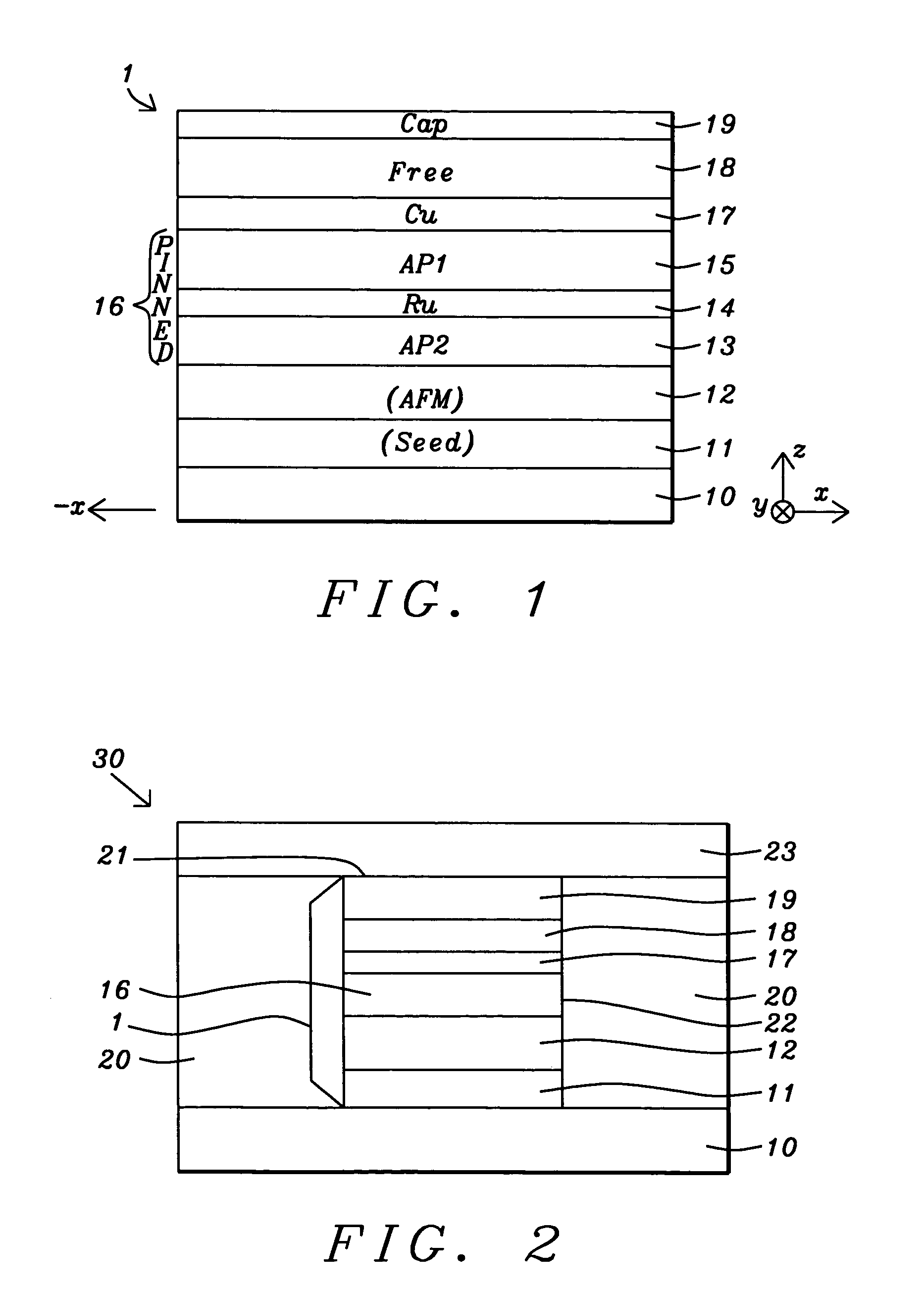Novel way to reduce the ordering temperature for Co2MnSi-like Heusler alloys for CPP, TMR, MRAM, or other spintronics device applications
a technology of co2mnsi and heusler alloy, which is applied in the field of al or feco monolayer insertion in a co2mnsilike heusler layer, can solve the problems of affecting the practical application of gmr or tmr sensors of heusler alloys, affecting the ordering temperature of heusler alloys, and difficult conditions to achieve an ordered half metal structure for co2mnsi/sub>m
- Summary
- Abstract
- Description
- Claims
- Application Information
AI Technical Summary
Benefits of technology
Problems solved by technology
Method used
Image
Examples
first embodiment
[0027]A first embodiment shown in FIG. 1 relates to a metallic CPP-GMR sensor having a bottom spin valve structure. The view in FIG. 1 is from a cross-section along an air bearing surface (ABS) plane in the read head. A novel spin valve structure 1 will be described first and then a method of forming the stack of layers in the spin valve structure will be provided. Referring to FIG. 1, a substrate 10 is shown that is typically a first magnetic shield (S1) in a read head. For example, the substrate 10 may be comprised of a 2 micron thick layer of an electroplated permalloy. There is a seed layer 11 that may be comprised of a lower Ta layer (not shown) having a thickness from 10 to 60 Angstroms and preferably about 20 Angstroms thick, and an upper Ru layer having a thickness about 5 to 40 Angstroms thick and preferably 20 Angstroms thick formed on the substrate 10. The seed layer 11 promotes a smooth and uniform crystal structure in the overlying layers that enhances the MR ratio in t...
second embodiment
[0036]In a second embodiment depicted in FIG. 3 that relates to a CCP CPP-GMR sensor, the spin valve structure is similar to that previously described except the spacer 17 is replaced by a composite spacer layer 27 comprised of a confining current path (CCP) layer (not shown) formed between lower and upper copper layers (not shown). As mentioned previously, a CCP layer may be employed in a spin valve structure to improve performance. In one aspect, the lower Cu layer is about 2 to 8 Angstroms thick and preferably 5.2 Angstroms thick, and the upper Cu layer has a thickness between 2 and 6 Angstroms and is preferably 3 Angstroms thick. The CCP layer may be made of AlCu that has been partially oxidized by a process described in a later section. The CCP layer has a thickness from 6 to 10 Angstroms and is preferably a AlCu layer having a thickness of about 8.5 Angstroms and an Al content of about 90 atomic %. The Cu / AlCu / Cu composite spacer layer 27 may be further modified by inserting a...
PUM
 Login to View More
Login to View More Abstract
Description
Claims
Application Information
 Login to View More
Login to View More - R&D
- Intellectual Property
- Life Sciences
- Materials
- Tech Scout
- Unparalleled Data Quality
- Higher Quality Content
- 60% Fewer Hallucinations
Browse by: Latest US Patents, China's latest patents, Technical Efficacy Thesaurus, Application Domain, Technology Topic, Popular Technical Reports.
© 2025 PatSnap. All rights reserved.Legal|Privacy policy|Modern Slavery Act Transparency Statement|Sitemap|About US| Contact US: help@patsnap.com



